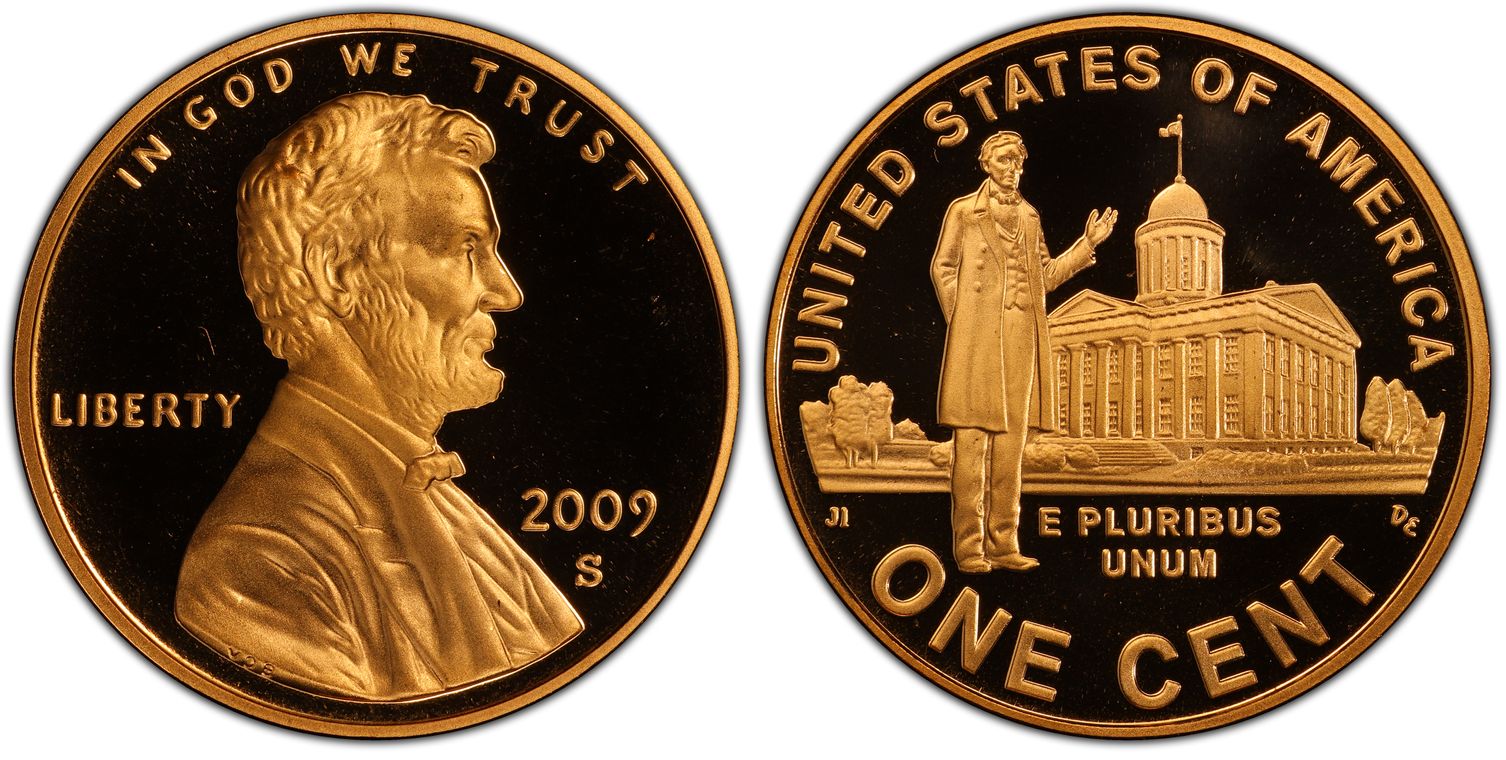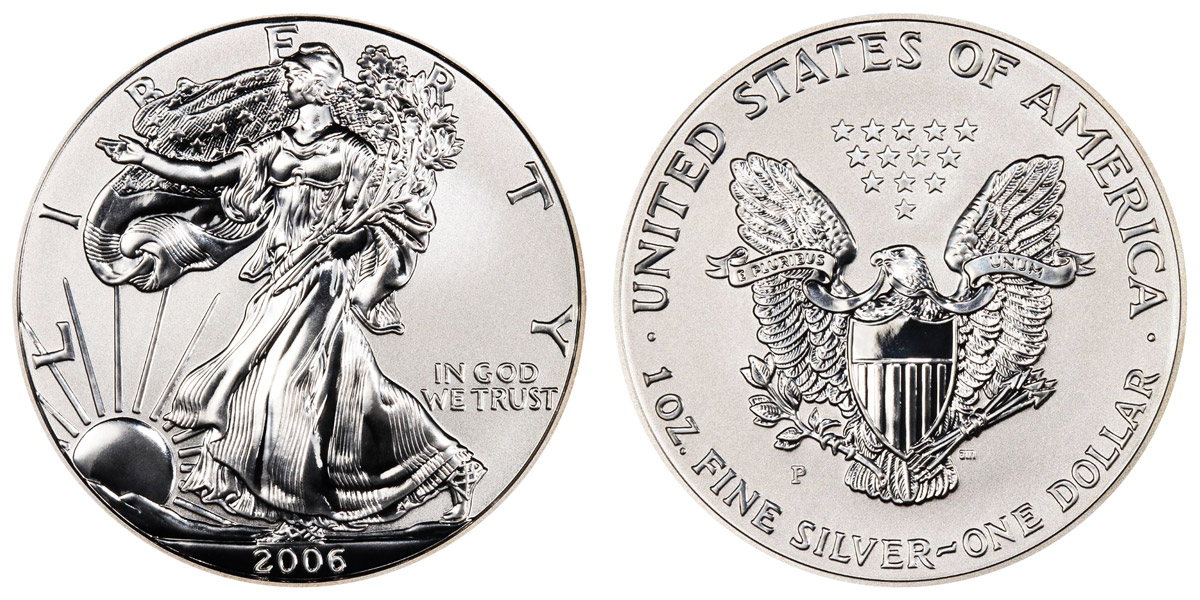What Is a Proof Coin? Definition and How to Identify Proofs
Proof coins are specially-made collectible coins. They usually have highly polished fields (backgrounds) that create a mirrored effect, although proofing techniques have varied over time.

Proof Lincoln penny. The highly reflective fields appear almost black in photographs.
Originally, proofs were made by mints in small quantities as show pieces for government officials. Lawmakers would be allowed to inspect the new coin designs prior to their release to the public.
Today, government mints make proof coins specifically as collectibles. Proofs normally have lower mintage totals than their non-proof counterparts. They are sold to coin collectors and coin dealers at a significant mark-up.
The Different Types of Proof Coins
Over time, the minting techniques used to create the distinctive devices on proof coins have occasionally changed.
In the early 20th century, the U.S. Mint made proofs with a “matte” or “sandblast” finish. Although they could be visually distinguished from coins made for circulation, most observers don’t find their appearance as striking as modern mirrored proofs.
The selection of special finishes offered by today’s mints has been expanded. These now include coins with reverse proof and enhanced uncirculated finishes, although these may not be offered every year the way traditional proof coins are.

The reverse proof American Silver Eagle was first introduced as a collectible in 2006.
Like the name sounds, the reverse proof finish has the opposite effect of a regular proof: the raised devices (relief) are mirrored, while the rest of the coin has a frosted appearance. In both cases, the frosted elements and mirrored elements create an eye-appealing contrast to one another.
Proof Coins vs. Regular Coins
Proof coins are made specifically for coin collectors. Regular coins made for circulation (i.e. circulating coins) can also become collectible, but that's not their original intention. With proofs, the intention from the beginning is for the coins to be saved in collections.
This also distinguishes proof coins from bullion coins, which are sold for investment purposes. Proof coins may be made of gold and silver, but bullion coins are bought specifically for their precious metal content. A bullion coin is rarely considered a collectible.
So how do you tell a proof coin from a regular circulated coin? The easiest way to distinguish a proof coin from a normal coin is its appearance. The highly reflective field has a mirror-like quality that clearly stands out. You can usually tell a proof coin apart visually from a regular coin that happens to be very shiny.
It's also worth discussing the difference between proof coins and uncirculated coins. The latter are also generally intended as collectibles. However, uncirculated coins will not have the same mirrored background that proofs do. This is the clearest visual difference.
Proof Sets vs. Mint Sets
Each year, most government mints release proof sets of coins. These sets include one coin of each denomination with a proof finish. They are sold in special packaging and make popular gifts for coin collectors. In addition, the mint may also release a "mint set" that includes all of the same coins with an uncirculated finish.
Proof set values tend to be rather modest. Depending on the set of coins, prices for sets from the U.S. Mint can range from $35 to well over $100. The higher prices are usually reserved for annual silver proof sets, where each coin is struck from silver. Unfortunately, on the secondary market, a proof set from a given year may only garner $5 to $10.
Buying and Collecting Proof Coins
Like all collectible coins, proofs are always meant to be kept in mint state. By virtue of their special finish, they are very susceptible to environmental damage if handled improperly. Any proof that is certified below a grade of 60 is considered impaired. (Abbreviations of PR-60 or PF-60 are used as the equivalent of the MS abbreviation for normal mint-state coins.)
Sometimes you will find a proof coin mistakenly spent as money and returned as change. (I personally have experienced this at the grocery store on one occasion!) This also means, however, that the coin has been touched and circulated, which will almost invariably cause distracting damage to the coin, such as scratches, which will greatly reduce its value. Sadly, an ugly proof coin becomes almost worthless from a collectible perspective.
If you'd like to buy proof coins, follow the link below to browse our available inventory:
Shop for Proof Coins at Gainesville Coins
Frequently Asked Questions About Proof Coins
What is the difference between proof coins and mint coins?
Mint coins—better known as uncirculated coins or business strike coins—are made for public circulation, while proof coins are not. Rather than being distributed to banks, proofs are often sold directly by the government mint in proof coin sets. Many commemorative coins made for collectors will come in both proof and uncirculated versions.
Proof coins also go through a special minting process that is not conducive to the mass minting techniques used for circulating coins. The proofing process involves using highly polished dies and coin blanks to create a mirror-like finish on the fields of the coins. The sharper details of proofs are created by multiple strikes from the coin press, whereas regular coins are only struck once.
Is it better to buy a proof coin or uncirculated coin?
Choosing between proof coins or uncirculated coins is entirely up to you and your personal preferences. If you want a coin with a much shinier finish, go with a proof. Bear in mind that most collectors gravitate towards proof coins, so as a result their uncirculated counterparts will sometimes end up with lower mintage totals and thus become more valuable as collectibles down the road.
Can a proof coin be circulated?
Proof coinage is not intended to be circulated. Instead, they are minted specifically for collecting and are sold at much higher prices. However, on occasion it certainly happens that a proof coin will mistakenly end up in circulation. This invariably leaves the coin in a lower grade and impairs its collectible value.
Can you touch a proof coin?
It is not recommended. Due to their highly reflective fields, proof coins are more susceptible to showing fingerprints, smudges, and scratches than normal coins. You should keep proof coins in a protective capsule. If you must handle them, use cotton gloves and hold the coin by its edge.
Read more about the different types of coins from the expert authors at Gainesville Coins:
What Are Brilliant Uncirculated Coins? Beginner's Guide
What Are Gem Coins? Understanding Quality, Rarity, and Value
What Are Uncirculated Coins? Guide to Condition and Value
How to Collect Coins for Beginners: Coin Collecting 101
Numismatics Guide: Discover the Thrill of Coin Collecting

Everett Millman
Everett has been the head content writer and market analyst at Gainesville Coins since 2013. He has a background in History and is deeply interested in how gold and silver have historically fit into the financial system.
In addition to blogging, Everett's work has been featured in Reuters, CNN Business, Bloomberg Radio, TD Ameritrade Network, CoinWeek, and has been referenced by the Washington Post.
